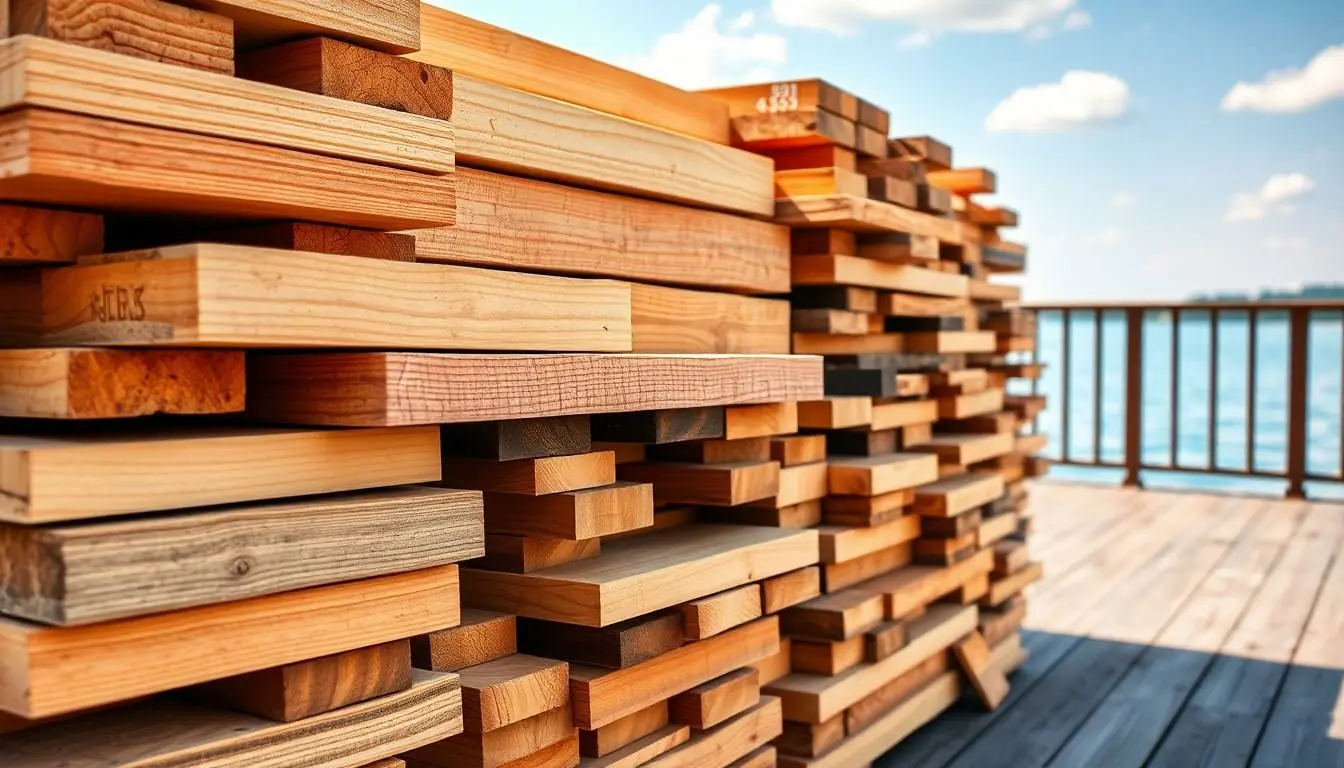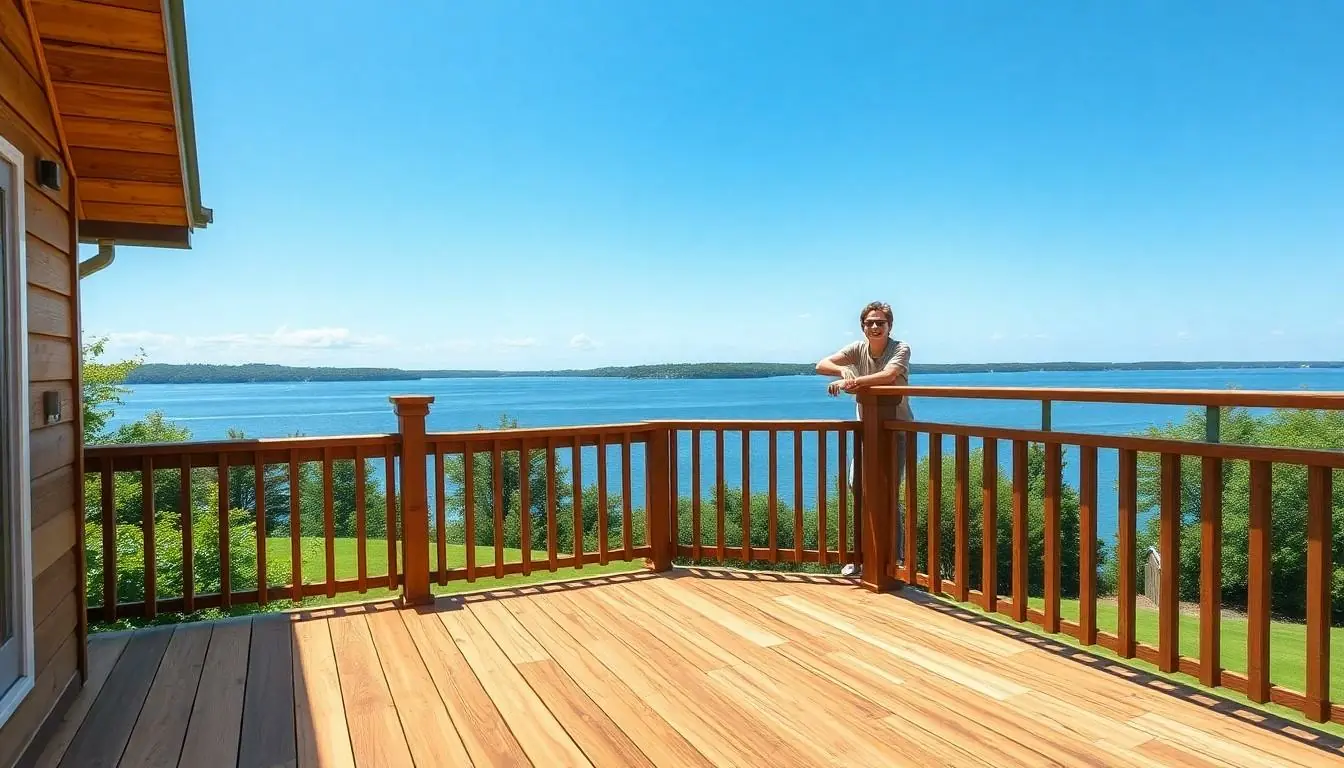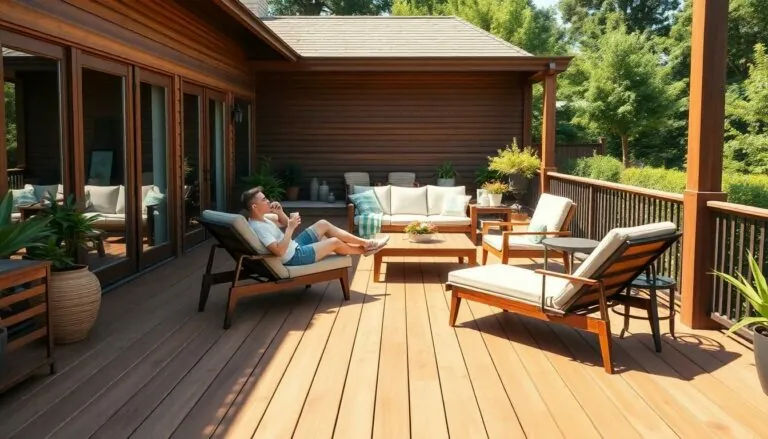When it comes to outdoor living, nothing beats the charm of a well-built deck or dock. It’s like adding a slice of paradise right in your backyard or by the water. But let’s face it—choosing the right lumber can feel like picking the perfect avocado at the grocery store. You want it to be strong, durable, and ready to withstand the elements without turning into a soggy mess.
That’s where decks and docks lumber comes into play. This isn’t just any lumber; it’s the superhero of outdoor projects. With its resistance to moisture, insects, and the occasional clumsy neighbor, it ensures your dream space remains intact for years to come. So whether you’re planning a summer barbecue or a cozy evening by the water, investing in quality lumber is the first step toward creating an outdoor oasis that’ll make all your neighbors jealous.
Table of Contents
ToggleOverview of Decks and Docks Lumber
Decks and docks lumber serves as the foundation for outdoor living spaces. Selecting suitable lumber enhances both functionality and aesthetic appeal. Common options include treated lumber, cedar, and composite materials. Treated lumber stands out for its resistance to moisture, making it ideal for areas exposed to water. Cedar offers natural resistance to insects and decay, contributing to its popularity for decks.
Many homeowners prefer composite materials for their durability and low maintenance. These materials resist fading and offer a variety of colors and textures. Additionally, some products combine wood fibers and recycled plastics, providing an eco-friendly choice.
Understanding the advantages of each lumber type assists in making informed decisions. Treated lumber typically costs $2 to $3 per linear foot, while cedar can range from $3 to $5 per linear foot. Composite materials usually start around $4 to $6 per linear foot, varying based on brand and quality. The long-term savings on maintenance for composite often justify the higher upfront cost.
Both local climates and intended use influence lumber selection. For coastal areas, moisture-resistant options become crucial. In contrast, regions with minimal rainfall may offer greater flexibility in lumber choice. Planning for seasonal changes guarantees the longevity of the structure.
Investing in quality lumber translates to enhanced outdoor enjoyment. Durable options withstand harsh weather and provide peace of mind. A careful selection process ensures decks and docks remain safe, functional, and visually appealing for years to come.
Types of Decks and Docks Lumber

Choosing the right lumber for decks and docks involves understanding the various options available. Several types of lumber feature distinct properties that can enhance outdoor spaces.
Pressure-Treated Lumber
Pressure-treated lumber stands out for its exceptional moisture resistance. This type of lumber undergoes a process that infuses chemicals, helping prevent rot and insect damage. Typically, it’s ideal for water-exposed areas, such as docks. Cost-wise, it ranges from $2 to $3 per linear foot, making it an affordable choice for many projects. Homeowners often select this lumber for its durability and strength, ensuring long-lasting performance.
Composite Materials
Composite materials combine wood fibers with recycled plastics, creating a low-maintenance alternative. These materials resist moisture, insects, and fading, making them suitable for various climates. Homeowners appreciate the variety of colors and textures available, allowing customization for outdoor spaces. Costing around $4 to $6 per linear foot, composite lumber offers durability without sacrificing aesthetics. This option suits those seeking an eco-friendly, attractive solution for decks and docks.
Exotic Hardwoods
Exotic hardwoods, such as teak and mahogany, provide remarkable durability and stunning visual appeal. Known for their natural resistance to insects and decay, these woods excel in harsh environments. They often come at a premium price, typically exceeding $8 per linear foot, reflecting their quality and rarity. Many homeowners favor these materials for upscale projects, creating elegant outdoor spaces. Selecting exotic hardwoods guarantees both longevity and beauty for any deck or dock.
Benefits of Using Decks and Docks Lumber
Quality decks and docks lumber offers many advantages. Homeowners benefit from enhanced durability and aesthetic charm, ensuring outdoor spaces remain inviting and functional.
Durability and Longevity
Treated lumber provides excellent moisture resistance, making it ideal for exposure to water. Products like pressure-treated lumber boast longevity, lasting up to 30 years with proper maintenance. Cedar naturally resists decay and insects, complementing its enduring qualities. Composite materials excel in low maintenance while offering weather resilience. Homeowners choose them for their ability to withstand harsh climates, even in coastal regions. Various factors influence these choices, including environmental conditions and intended use.
Aesthetic Appeal
Decks and docks lumber enhances outdoor aesthetics significantly. Certain options like cedar and exotic hardwoods deliver stunning visual appeal and rich colors. Composite materials come in diverse styles and finishes, allowing personalization to fit individual tastes. Natural wood grain patterns add warmth and character, inviting relaxation and gatherings. Each type of lumber contributes to a unique look, creating an attractive atmosphere. A well-designed outdoor space stands out and adds value to a property.
Installation and Maintenance Tips
Proper installation and maintenance ensure decks and docks made from quality lumber remain durable and visually appealing. Attention to detail during these processes contributes significantly to longevity and overall performance.
Proper Installation Techniques
Begin with a solid foundation. A leveled and well-drained base prevents water pooling, reducing moisture-related damage. Use stainless steel or galvanized fasteners to prevent rust and corrosion. Ensure that lumber boards are spaced properly to allow for natural expansion and contraction. Check for proper alignment frequently during the installation process. Additionally, consider using an appropriate sealant on the edges to enhance moisture resistance. Follow manufacturer guidelines during installation for optimal results.
Maintenance Best Practices
Inspect the decking regularly for any signs of wear. Wood materials should receive a thorough cleaning at least once a year to remove dirt and debris. Apply a clear sealant or stain every two to three years to protect against moisture and UV damage. Address any loose or damaged boards immediately to prevent further issues. Consider routine checks on joints and fasteners, ensuring they remain secure. Clear away vegetation and contaminants to maintain a safe and inviting outdoor space.
Environmental Considerations
Selecting lumber for decks and docks involves important environmental considerations. Treated lumber may contain chemicals that can leach into waterways, impacting aquatic life. Cedar offers a naturally resistant option, reducing the need for chemical treatments while providing longevity. Composite materials also contribute positively, often incorporating recycled plastics, which helps divert waste from landfills.
Sourcing local lumber minimizes transportation emissions, making it an eco-friendly choice. Choosing sustainably harvested wood reduces deforestation and preserves biodiversity in forests. Certifications from organizations like the Forest Stewardship Council (FSC) and Sustainable Forestry Initiative (SFI) ensure responsible sourcing practices.
Using materials with low carbon footprints enhances the overall environmental impact of a project. Composite options often outperform traditional lumber in terms of environmental benefits, allowing for lower maintenance and longer lifespans. After installation, regular maintenance such as cleaning and sealing contributes to product longevity, decreasing the need for replacements.
Attention to environmental issues doesn’t just focus on materials; it also impacts water management. Proper drainage and erosion control during installation protect surrounding ecosystems. In coastal areas, employing environmentally friendly practices like permeable decking helps manage stormwater runoff.
Integrating native plant landscaping alongside decks and docks creates habitats for local wildlife, promoting ecological balance. Communities benefit from projects that prioritize sustainability, enhancing property values while supporting environmental health. Engaging in responsible choices not only creates durable outdoor living spaces but also positively contributes to the environment.
Choosing the right lumber for decks and docks is crucial for creating durable and visually appealing outdoor spaces. Quality materials not only enhance the longevity of these structures but also contribute to their aesthetic charm. By considering options like treated lumber, cedar, and composite materials, individuals can make informed decisions that suit their specific needs and local climates.
Investing in quality lumber pays off in the long run, ensuring safety and functionality while adding value to properties. With proper installation and maintenance practices, outdoor living areas can remain inviting and resilient for years to come. Prioritizing sustainable choices further enhances the benefits, promoting both environmental responsibility and beautiful outdoor spaces.




